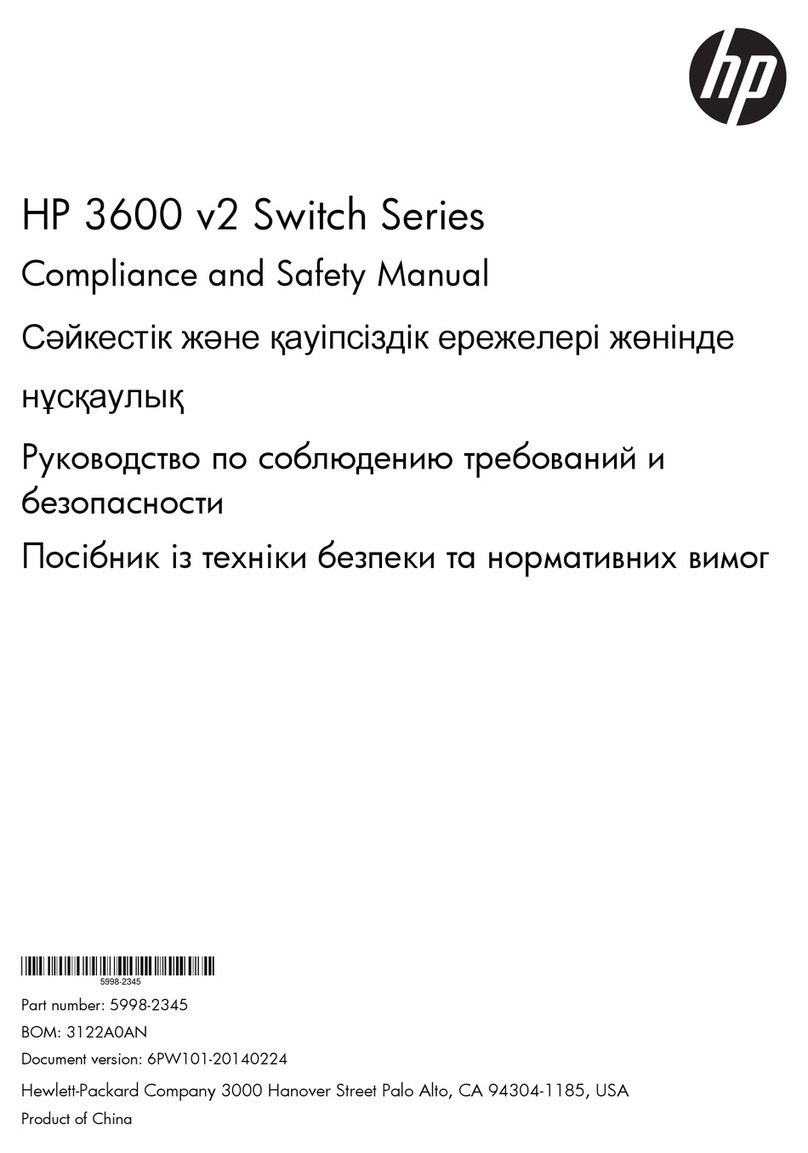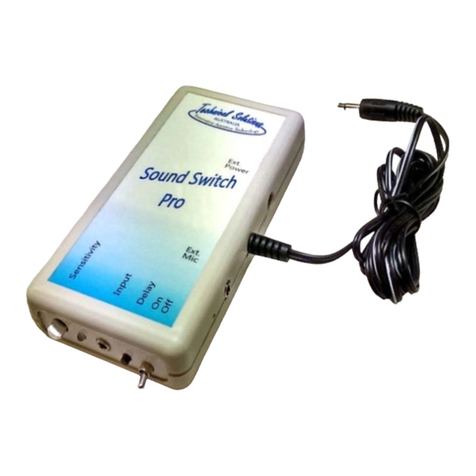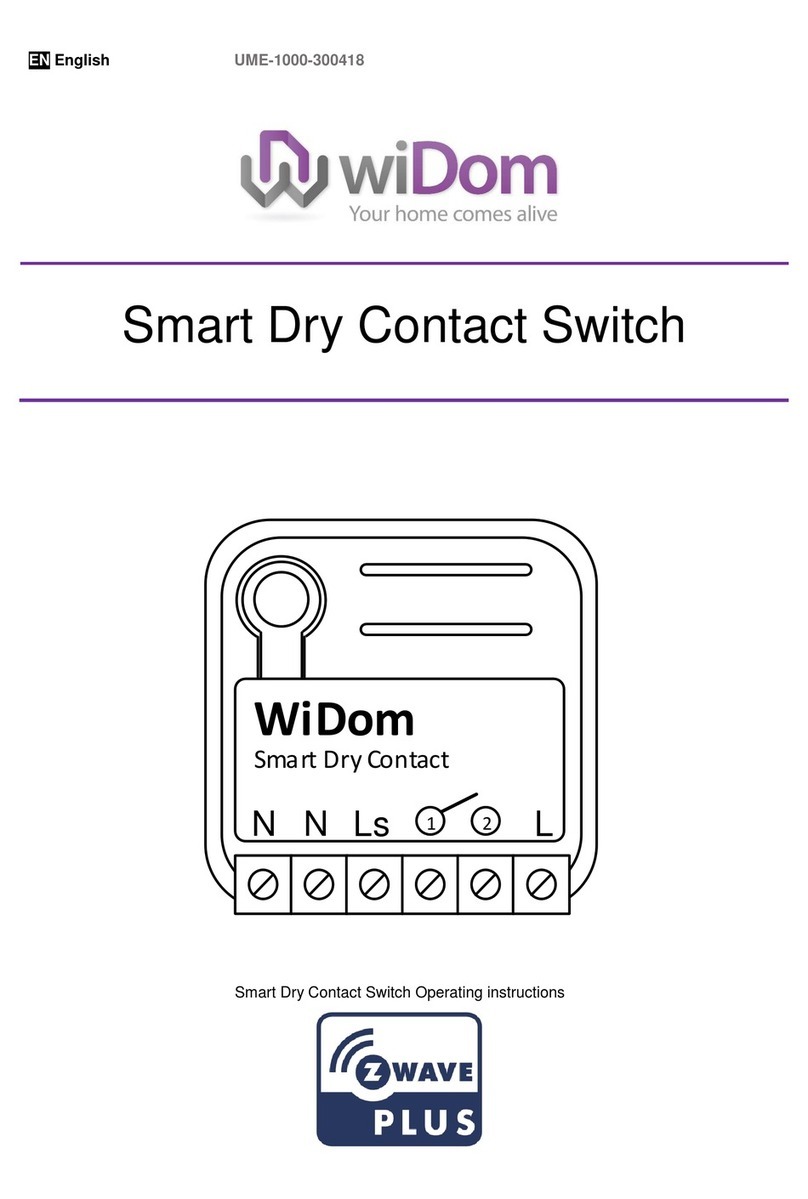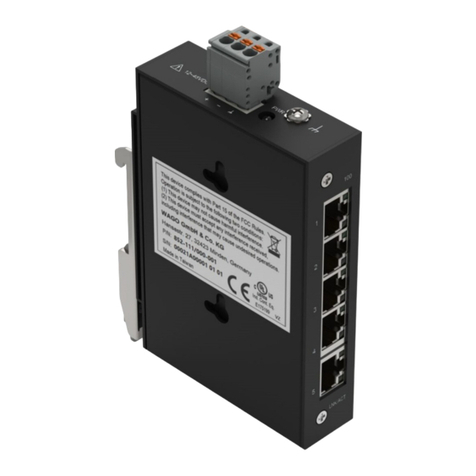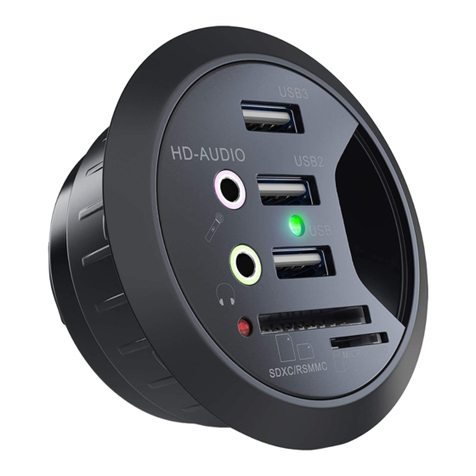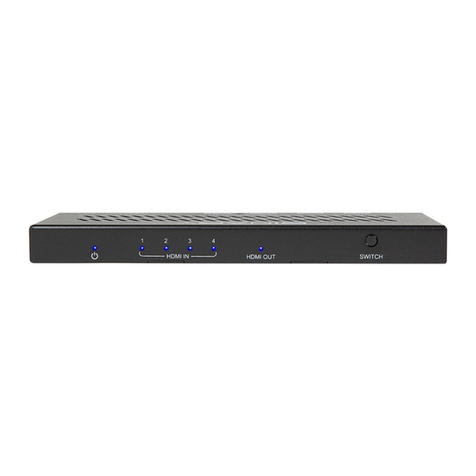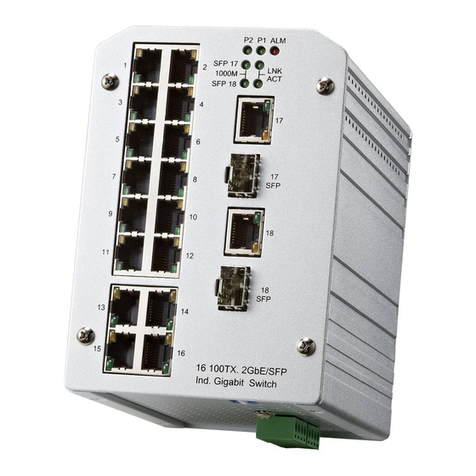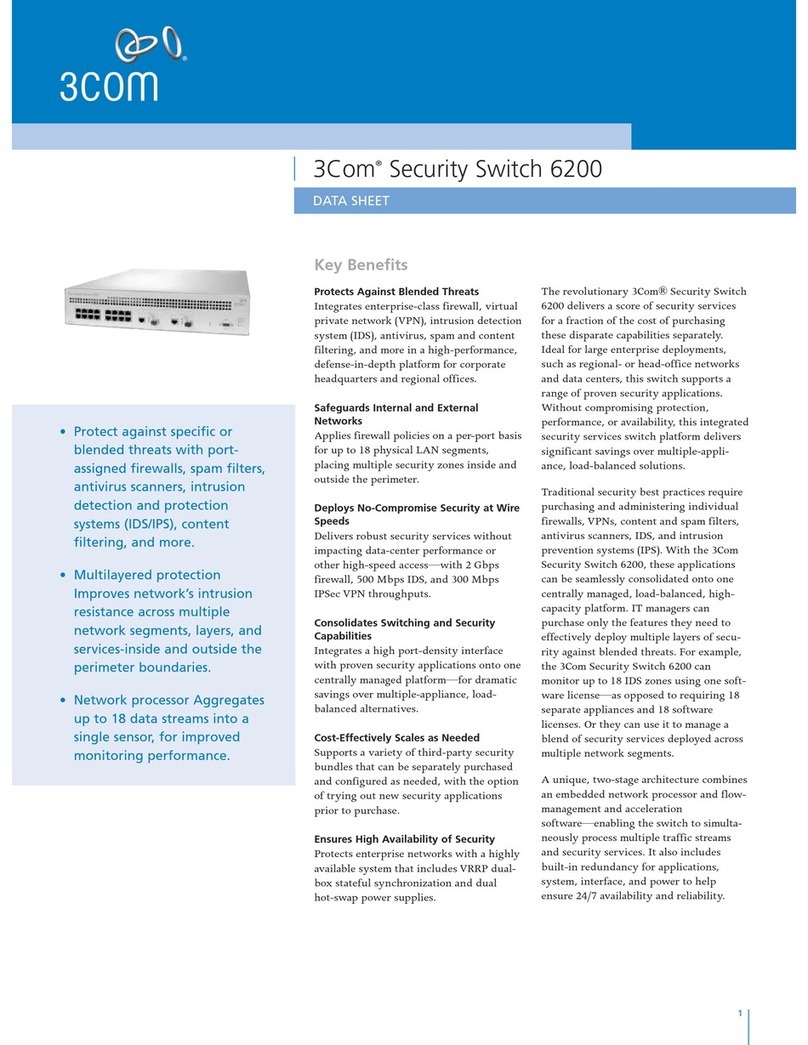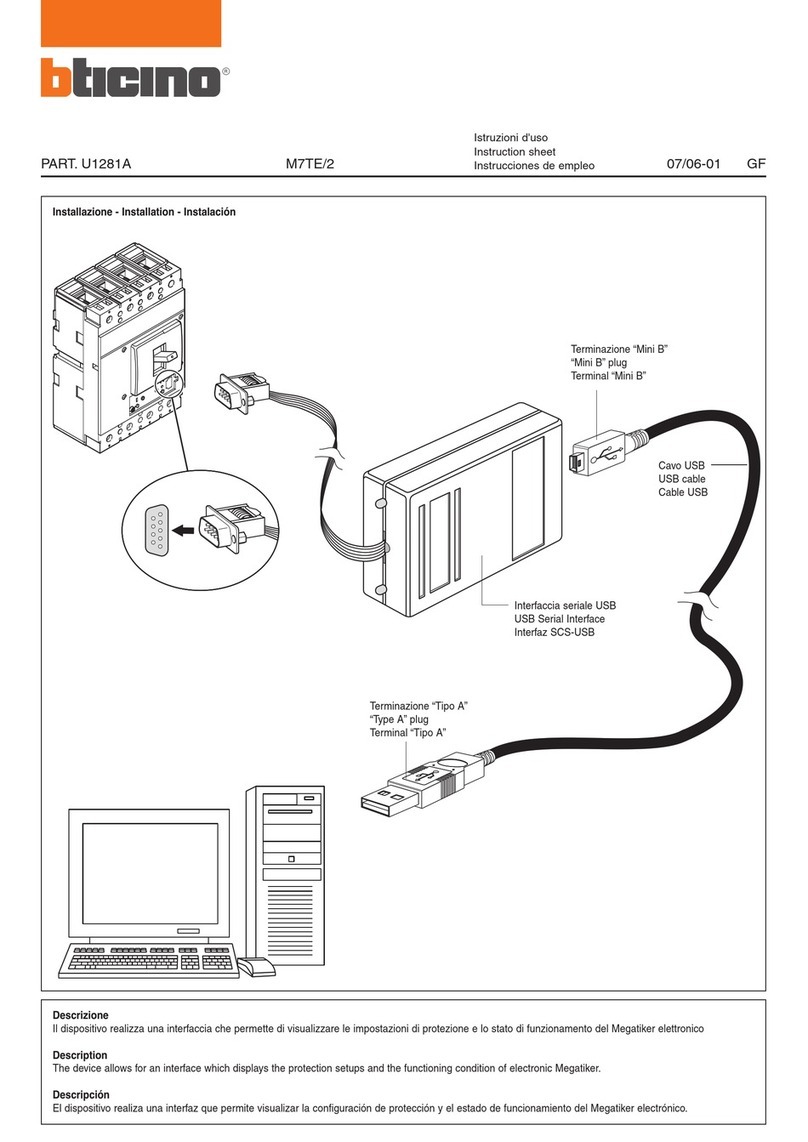IEK KARAT Series User manual

Краткое руководство по эксплуатации
Основные сведения об изделии
Óñòðîéñòâî àâòîìàòè÷åñêîãî ââîäà ðåçåðâà òèïà ÀÂÐ ñåðèè KARAT
òîâàðíîãî çíàêà IEK (äàëåå – ÀÂÐ), ïðåäíàçíà÷åíî äëÿ àâòîìàòè÷åñêîãî
ïåðåêëþ÷åíèÿ íà ðåçåðâíîå ïèòàíèå ýëåêòðè÷åñêèõ òðåõôàçíûõ öåïåé
ïåðåìåííîãî òîêà íàïðÿæåíèåì äî 400  ÷àñòîòîé 50 Ãö.
ÀÂÐ ñîîòâåòñòâóåò òðåáîâàíèÿì òåõíè÷åñêèõ ðåãëàìåíòîâ
ÒÐ ÒÑ 004/2011, ÒÐ ÒÑ 020/2011, ÒÐ ÅÀÝÑ 037/2016 è ÃÎÑÒ IEC 60947-6-1.
Óñëîâèÿ ýêñïëóàòàöèè:
– äèàïàçîí ðàáî÷èõ òåìïåðàòóð îêðóæàþùåãî âîçäóõà – îò ìèíóñ 5 °C
äî ïëþñ 40 °Ñ;
– ãðóïïà ìåõàíè÷åñêîãî èñïîëíåíèÿ – Ì2 ïî ÃÎÑÒ 17516.1;
– âûñîòà íàä óðîâíåì ìîðÿ – íå áîëåå 2000 ì;
– ðàáî÷åå ïîëîæåíèå â ïðîñòðàíñòâå – íà âåðòèêàëüíîé ïëîñêîñòè
(ñìîòðè ðèñóíîê 6), äîïóñêàåòñÿ ïîâîðîò ± 90°;
– îòíîñèòåëüíàÿ âëàæíîñòü – 50 % ïðè òåìïåðàòóðå 40 °C, äîïóñêàåòñÿ
èñïîëüçîâàíèå ÀÂÐ ïðè îòíîñèòåëüíîé âëàæíîñòè 90 %
è òåìïåðàòóðå 20 °C;
– îêðóæàþùàÿ ñðåäà íåâçðûâîîïàñíàÿ, íå ñîäåðæàùàÿ àãðåññèâíûõ
ãàçîâ è ïàðîâ â êîíöåíòðàöèÿõ, ðàçðóøàþùèõ ìåòàëëû è èçîëÿöèþ,
íå íàñûùåííàÿ òîêîïðîâîäÿùåé ïûëüþ è âîäÿíûìè ïàðàìè.
Технические данные
Îñíîâíûå òåõíè÷åñêèå äàííûå ÀÂÐ ïðèâåäåíû â òàáëèöå 1.
Îñíîâíûå òåõíè÷åñêèå äàííûå âñòðîåííûõ àâòîìàòè÷åñêèõ
âûêëþ÷àòåëåé ïðèâåäåíû â òàáëèöå 2.
 àâòîìàòè÷åñêîì ðåæèìå ïåðåêëþ÷åíèå ÀÂÐ ñ îñíîâíîãî ââîäà
íà ðåçåðâíûé è îáðàòíî ïðîèçâîäèòñÿ ñ ïîìîùüþ êîíòðîëëåðà.
Ïàðàìåòðû êîíòðîëëåðà ïðèâåäåíû â òàáëèöå 3.
Íàçíà÷åíèå ýëåìåíòîâ ïàíåëè óïðàâëåíèÿ äëÿ ÀÂÐ-1 STANDARD
ïðèâåäåíî íà ðèñóíêå 1, äëÿ ÀÂÐ-2 LITE – íà ðèñóíêå 2.
Ðàñïîëîæåíèå âûâîäîâ êîíòðîëëåðà äëÿ ÀÂÐ-1 STANDARD – ïðèâåäåíî
1
ÓÑÒÐÎÉÑÒÂÎ ÀÂÒÎÌÀÒÈ×ÅÑÊÎÃÎ ÂÂÎÄÀ ÐÅÇÅÐÂÀ
ÒÈÏÀ ÀÂÐ
KARAT
RU

2
íà ðèñóíêå 3, äëÿ ÀÂÐ-2 LITE – íà ðèñóíêå 4.
Âðåìÿ-òîêîâûå õàðàêòåðèñòèêè âñòðîåííûõ àâòîìàòè÷åñêèõ
âûêëþ÷àòåëåé ïðèâåäåíû íà ðèñóíêå 5.
Ðóêîÿòêà ïåðåêëþ÷åíèÿ â ðåæèìå MANU ïîçâîëÿåò ïðîèçâîäèòü
ïåðåêëþ÷åíèå ñ îñíîâíîãî ââîäà íà ðåçåðâíûé. Äëÿ âêëþ÷åíèÿ ïèòàíèÿ
îñíîâíîãî ââîäà íåîáõîäèìî ïîâåðíóòü ðóêîÿòêó ïðîòèâ íàïðàâëåíèÿ
÷àñîâîé ñòðåëêè äî óïîðà, äëÿ ïåðåêëþ÷åíèÿ íà ïèòàíèå ðåçåðâíîãî ââîäà
íåîáõîäèìî ïîâåðíóòü ðóêîÿòêó ïî íàïðàâëåíèþ ÷àñîâîé ñòðåëêè äî óïîðà.
 ñðåäíåì ïîëîæåíèè (ðóêîÿòêà ðàñïîëàãàåòñÿ âåðòèêàëüíî – êàê ïîêàçàíî
íà ðèñóíêàõ 1 è 2) – îáå öåïè ïèòàíèÿ îòêëþ÷åíû.
 ÀÂÐ-1 STANDARD ðåàëèçîâàíà ôóíêöèÿ óñòàíîâêè âðåìåíè çàäåðæêè
ïåðåêëþ÷åíèÿ. Ñ ïîìîùüþ ïîòåíöèîìåòðîâ íà ïàíåëè óïðàâëåíèÿ ìîæíî
îòðåãóëèðîâàòü âðåìÿ çàäåðæêè ïåðåêëþ÷åíèÿ ïèòàíèÿ ñ îñíîâíîãî ââîäà
íà ðåçåðâíûé (T1) è ñ ðåçåðâíîãî ââîäà íà îñíîâíîé (T2). Íåîáõîäèìî
ïîâåðíóòü ïîòåíöèîìåòðû ïî íàïðàâëåíèþ ÷àñîâîé ñòðåëêè äëÿ óâåëè÷åíèÿ
âðåìåíè çàäåðæêè ïåðåêëþ÷åíèÿ è ïðîòèâ ÷àñîâîé – äëÿ åãî óìåíüøåíèÿ.
Êîíòðîëü çà íàëè÷èåì íàïðÿæåíèÿ â ÀÂÐ îñóùåñòâëÿåòñÿ ñ ïîìîùüþ
ïðîâîäíèêîâ êîíòðîëÿ. Â ÀÂÐ-1 STANDARD êîíòðîëü îñóùåñòâëÿåòñÿ ïî
òðåì ôàçàì, êàê îñíîâíîãî, òàê è ðåçåðâíîãî ââîäà, â ÀÂÐ-2 LITE êîíòðîëü
îñóùåñòâëÿåòñÿ ïî îäíîé ôàçå, êàê îñíîâíîãî, òàê è ðåçåðâ-íîãî ââîäà.
Àëãîðèòìû çàìåíû àâòîìàòè÷åñêèõ âûêëþ÷àòåëåé ïðèâåäåíû â òàáëèöå 4.
ÀÂÐ îñíàùåíû ñâåòîäèîäíîé èíäèêàöèåé ñîñòîÿíèÿ.
ÀÂÐ-1 STANDARD îñíàùåíû ñâåòîäèîäíîé èíäèêàöèåé îñíîâíîãî
ââîäà (èíäèêàòîð íàëè÷èÿ íàïðÿæåíèÿ îñíîâíîãî ââîäà, èíäèêàòîð
ïîëîæåíèÿ ãëàâíîé êîíòàêòíîé ãðóïïû ÂÀ îñíîâíîãî ââîäà) è ñâåòîäèîäíîé
èíäèêàöèåé ðåçåðâíîãî ââîäà (èíäèêàòîð íàëè÷èÿ íàïðÿæåíèÿ ðåçåðâíîé
ââîäà, èíäèêàòîð ïîëîæåíèÿ ãëàâíîé êîíòàêòíîé ãðóïïû ÂÀ ðåçåðâíîãî
ââîäà).
Ïðè íàëè÷èè íàïðÿæåíèÿ íà îñíîâíîì ââîäå, ãîðèò êðàñíûé ñâåòîäèîä
îñíîâíîãî ââîäà – UI (I).
Ïðè íàëè÷èè íàïðÿæåíèÿ íà ðåçåðâíîì ââîäå, ãîðèò êðàñíûé
ñâåòîäèîä ðåçåðâíîãî ââîäà – UII (II).
Ïðè çàìûêàíèè ÂÀ îñíîâíîãî ââîäà, ãîðèò çåëåíûé ñâåòîäèîä
ïîëîæåíèÿ ãëàâíîé êîíòàêòíîé ãðóïïû îñíîâíîãî ââîäà – ON.
Ïðè çàìûêàíèè ÂÀ ðåçåðâíîãî ââîäà, ãîðèò çåëåíûé ñâåòîäèîä
ïîëîæåíèÿ ãëàâíîé êîíòàêòíîé ãðóïïû ðåçåðâíîãî ââîäà – ON.
Ïðè íåêîððåêòíîé ñõåìå ïîäêëþ÷åíèÿ, èëè íåñîîòâåòñòâèè ïèòàþùåãî
KARAT

3
íàïðÿæåíèÿ, ÀÂÐ áóäåò ñèãíàëèçèðîâàòü ìèãàþùèìè çåëåíûì è êðàñíûì
ñâåòîäèîäàìè, ñ ÷àñòîòîé 1 ðàç/ñ.
Ïðè ñðàáàòûâàíèè ÀÂÐ ïî ñâåðõòîêó ÀÂÐ áóäåò ñèãíàëèçèðîâàòü
ìèãàþùèìè çåëåíûì è êðàñíûì ñâåòîäèîäàìè, ñ ÷àñòîòîé 1 ðàç/ñ.
ÀÂÐ-2 LITE îñíàùåíû ñâåòîäèîäíîé èíäèêàöèåé îñíîâíîãî ââîäà
(èíäèêàòîð íàëè÷èÿ íàïðÿæåíèÿ îñíîâíîãî ââîäà, èíäèêàòîð ïîëîæåíèÿ
ãëàâíîé êîíòàêòíîé ãðóïïû ÂÀ îñíîâíîãî ââîäà) è ñâåòîäèîäíîé
èíäèêàöèåé ðåçåðâíîãî ââîäà (èíäèêàòîð íàëè÷èÿ íàïðÿæåíèÿ ðåçåðâíîãî
ââîäà, èíäèêàòîð ïîëîæåíèÿ ãëàâíîé êîíòàêòíîé ãðóïïû ÂÀ ðåçåðâíîãî
ââîäà).
Ïðè íàëè÷èè íàïðÿæåíèÿ íà îñíîâíîì ââîäå, ãîðèò êðàñíûé ñâåòîäèîä
îñíîâíîãî ââîäà – ÀÑ.
Ïðè íàëè÷èè íàïðÿæåíèÿ íà ðåçåðâíîì ââîäå, ãîðèò êðàñíûé
ñâåòîäèîä ðåçåðâíîãî ââîäà – ÀÑ.
Ïðè çàìûêàíèè ÂÀ îñíîâíîãî ââîäà, ãîðèò çåëåíûé ñâåòîäèîä
ïîëîæåíèÿ ãëàâíîé êîíòàêòíîé ãðóïïû îñíîâíîãî ââîäà – ON.
Ïðè çàìûêàíèè ÂÀ ðåçåðâíîãî ââîäà, ãîðèò çåëåíûé ñâåòîäèîä
ïîëîæåíèÿ ãëàâíîé êîíòàêòíîé ãðóïïû ðåçåðâíîãî ââîäà – ON.
 ÀÂÐ-2 LITE íå ðåàëèçîâàíà ëîãèêà ñâåòîäèîäíîé ñèãíàëèçàöèè ïðè
ñðàáàòûâàíèè ïî ñâåðõòîêó.
Ïðè÷èíû âîçìîæíûõ íåèñïðàâíîñòåé è ñïîñîáû èõ óñòðàíåíèÿ
ïðèâåäåíû â òàáëèöå 5. Ãàáàðèòíûå è óñòàíîâî÷íûå ðàçìåðû ÀÂÐ
ïðèâåäåíû íà ðèñóíêå 8 è â òàáëèöå 5.
Ãàáàðèòíûå è óñòàíîâî÷íûå ðàçìåðû ÀÂÐ ïðèâåäåíû íà ðèñóíêå 8 è â
òàáëèöå 6.
Ýëåêòðè÷åñêàÿ ñõåìà ÀÂÐ ïðåäñòàâëåíà íà ðèñóíêàõ 9 è 10.
ÂÍÈÌÀÍÈÅ
Äëÿ êîððåêòíîé ðàáîòû ÀÂÐ-1 STANDARD, ñõåìà ïîäêëþ÷åíèÿ äîëæíà
ñîîòâåòñòâîâàòü ñõåìå, ïðèâåäåííîé íà ðèñóíêå 9.
Комплектность
Êîìïëåêò ïîñòàâêè ÀÂÐ ïðèâåäåí â òàáëèöå 6.
Меры безопасности
Ìîíòàæ è ââîä â ýêñïëóàòàöèþ ÀÂÐ äîëæíû îñóùåñòâëÿòüñÿ òîëüêî
êâàëèôèöèðîâàííûì ýëåêòðîòåõíè÷åñêèì ïåðñîíàëîì.
KARAT

4
Ýêñïëóàòàöèþ ÀÂÐ ñëåäóåò îñóùåñòâëÿòü â ñîîòâåòñòâèè ñ äåéñòâó-
þùèìè òðåáîâàíèÿìè ïðàâèë ïî ýëåêòðîáåçîïàñíîñòè, à òàêæå äðóãîé
íîðìàòèâíî-òåõíè÷åñêîé äîêóìåíòàöèè, ðåãëàìåíòèðóþùåé ýêñïëóàòàöèþ,
íàëàäêó è ðåìîíò ýëåêòðîòåõíè÷åñêîãî îáîðóäîâàíèÿ.
Правила монтажа и эксплуатации
ÀÂÐ óñòàíàâëèâàåòñÿ íà ìåòàëëè÷åñêîé ïàíåëè òîëùèíîé íå ìåíåå
1,5 ìì èëè èçîëÿöèîííîé ïàíåëè òîëùèíîé íå ìåíåå 6 ìì è çàêðåïëÿþòñÿ
âèíòàìè.
Ìîíòàæ ÀÂÐ âûïîëíÿþò ãèáêèìè èëè æåñòêèìè ìåäíûìè ïðîâîäíèêàìè
ñå÷åíèåì ñîãëàñíî ïðèñîåäèíèòåëüíîé ñïîñîáíîñòè êîíòàêòíûõ çàæèìîâ,
óêàçàííîé â òàáëèöàõ 1 è 3.
Ðåêîìåíäóåòñÿ íå ðåæå îäíîãî ðàçà â òðè ìåñÿöà ïðîâîäèòü ïðîâåðêó
ðàáîòîñïîñîáíîñòè ÀÂÐ.
Транспортирование, хранение и утилизация
Òðàíñïîðòèðîâàíèå ÀÂÐ â ÷àñòè âîçäåéñòâèÿ ìåõàíè÷åñêèõ ôàêòîðîâ
îñóùåñòâëÿåòñÿ ïî ãðóïïå Ñ è Æ ÃÎÑÒ 23216.
Òðàíñïîðòèðîâàíèå ÀÂÐ äîïóñêàåòñÿ ëþáûì âèäîì êðûòîãî òðàíñïîðòà
â óïàêîâêå èçãîòîâèòåëÿ, îáåñïå÷èâàþùåé ïðåäîõðàíåíèå óïàêîâàííûõ
ÀÂÐ îò ìåõàíè÷åñêèõ ïîâðåæäåíèé, çàãðÿçíåíèÿ è ïîïàäàíèÿ âëàãè, ïðè
òåìïåðàòóðå îò ìèíóñ 20 °C äî ïëþñ 40 °C.
Õðàíåíèå ÀÂÐ îñóùåñòâëÿåòñÿ â óïàêîâêå èçãîòîâèòåëÿ â ïîìåùåíèÿõ ñ
åñòåñòâåííîé âåíòèëÿöèåé ïðè òåìïåðàòóðå îêðóæàþùåãî âîçäóõà îò ìèíóñ
20 °C äî ïëþñ 40 °C è îòíîñèòåëüíîé âëàæíîñòè äî 50 % ïðè òåìïåðàòóðå
40 °C, äîïóñêàåòñÿ õðàíåíèå ÀÂÐ ïðè îòíîñèòåëüíîé âëàæíîñòè 90 % è
òåìïåðàòóðå 20 °C.
Ïî èñòå÷åíèè ñðîêà ñëóæáû ÀÂÐ ïîäëåæèò óòèëèçàöèè.
Óòèëèçàöèÿ ÀÂÐ ïðîèçâîäèòñÿ ïóòåì ïåðåäà÷è îðãàíèçàöèÿì,
çàíèìàþùèìñÿ ïåðåðàáîòêîé âòîðè÷íîãî ñûðüÿ.
Срок службы и гарантии изготовителя
Ãàðàíòèéíûé ñðîê ýêñïëóàòàöèè ÀÂÐ – 7 ëåò ñî äíÿ ïðîäàæè ïðè
óñëîâèè ñîáëþäåíèÿ ïîòðåáèòåëåì ïðàâèë ìîíòàæà, ýêñïëóàòàöèè,
òðàíñïîðòèðîâàíèÿ è õðàíåíèÿ.
Ñðîê ñëóæáû ÀÂÐ ñîñòàâëÿåò 15 ëåò.
KARAT

5
Basic product data
Automatic transfer switch AVR type of KARAT series of IEK trademark
(hereinafter referred to as – AVR), is designed for automatic switching to backup
power supply of three-phase AC circuits with voltage up to 400 V and 50 Hz.
Operation conditions:
– operating temperature range of ambient air – from minus 5 °Ñ to plus 40 °Ñ;
– base altitude – maximum 2000 m;
– working position in space – on a vertical plane (figure 6), rotation ±90° is
allowed;
– relative humidity – 50 % at the temperature 40 °C, it is allowed to use AVR
at relative humidity of 90 % and temperature of 20 °C;
– non-explosive environment, not containing aggressive gases and vapors in
concentrations that destroy metals and insulation, not saturated with conductive
dust and water vapor.
Technical data
Main technical data of AVR are listed in table 1.
Main technical data of integral circuit breakers are listed in table 2.
In automatic mode, the AVR is switched from the primary input to the reserve
one and vice versa should be carried out using the controller, depending on the
voltage parameters of the power circuit
Controller parameters are listed in table 3.
The purpose of the control panel elements for AVR-1 STANDARD is shown
in Figure 1, for AVR-2 LITE – in figure 2.
Location of the controller outputs for AVR-1 STANDARD is shown in figure 3,
for AVR-2 LITE – in figure 4.
Time-current characteristics of integral circuit breakers are shown in figure 5.
The switch handle in MANU mode allows switching from the primary input
to the reserve one. To turn on the primary input power, turn the handle
counterclockwise until it stops, to switch to the reserve input power, turn the
handle clockwise until it stops. In the middle position (handle is vertical – as
shown in figures 1 and 2) – both power circuits are disconnected.
AUTOMATIC TRANSFER SWITCH AVR TYPE
KARAT
EN

6
In AVR-1 STANDARD, the function of setting the switching delay time has
been implemented. Using the potentiometers on the control panel, you can
adjust the delay time for switching power from the primary input to the reserve
(T1) and from the reserve input to the primary (T2). It is necessary to turn the
potentiometers clockwise to increase the switching delay time and
counterclockwise to decrease it.
Control over the presence of voltage in the AVR is carried out using control
conductors. In AVR-1 STANDARD, control is carried out in 3 phases of both the
primary and reserve inputs, in AVR-2 LITE; control is carried out on one phase of
both the primary and reserve inputs.
Procedure for replacing the circuit breakers are listed in the table 4.
AVRs (automatic transfer switches) are equipped with LED status indication.
AVR-1 STANDARD are equipped with LED indication of main input (main
input voltage indicator, position indicator of the main contact group of VA
(automatic circuit breaker) main input) and LED indication of standby input
(standby input voltage indicator, position indicator of main contact group of VA
standby input).
If there is voltage on the main input, the red LED of the main input - UI (I) is
on.
If there is voltage on the standby input, the red LED of standby input - UII (II)
is on.
When VA of the main input is closed, the green LED of the main contact
group position of the main input -ON is on.
When the VA of the standby input is closed, the green LED of the position of
the main contact group of the standby input - ON is on
If the connection diagram is incorrect, or the supply voltage is incorrect, the
AVR will signal with blinking green and red LEDs, with frequency of 1 time/sec.
When the AVR is tripped by overcurrent, the AVR will signal with blinking
green and red LEDs, with frequency of 1 time/sec.
AVR-2 LITE are equipped with LED indication of main input (main input
voltage indicator, position indicator of the main contact group of VA (automatic
circuit breaker) main input) and LED indication of standby input (standby input
voltage indicator, position indicator of main contact group of VA standby input).
If there is voltage on the main input, the red LED of the main input - AC is on.
If there is voltage on the standby input, the red LED of the standby input - AC
is on.
KARAT

7
When VA of the main input is closed, the green LED of the main contact
group position of the main input -ON is on.
When the VA of the standby input is closed, the green LED of the position of
the main contact group of the standby input - ON is on.
In AVR-2 LITE, there is no logic of LED signaling in case of overcurrent
tripping.
Troubleshooting and remedies are shown in table 5.
The overall and mounting dimensions of the AVR are shown in figure 8 and in
the table 5.
The overall and mounting dimensions of the AVR are shown in figure 8 and
in the table 5.
Circuit diagram of primary, reserve and control circuits of AVR are shown
in figures 9 and 10.
ATTENTION
For correct operation of AVR-1 STANDARD, the connection diagram
should correspond to the diagram shown in figure 9.
Completeness of set
Delivery set of AVR is listed in table 6.
Safety measures
Mounting and commissioning of the AVR should be carried out only by
qualified electrical personnel.
The operation of the automatic transfer switch should be carried out in
accordance with the current requirements of the rules for electrical safety, as well
as other reference documentation regulating the operation, adjustment and
repair of electrical equipment.
Installation and operation rules
AVR is installed on a metal panel with a thickness of at least 1,5 mm or on an
insulating panel with a thickness of at least 6 mm and fixed with screws
AVR mounting is carried out with flexible, rigid copper or aluminum
conductors with a cross-section according to the connecting capacity of the
terminals specified in tables 1 and 3.
It is recommended to check the AVR performance at least once every three
months.
KARAT

8
Transportation, storage and disposal
Transportation of AVR is allowed by any type of covered transport in the
manufacturer's package, which protects the packed AVR from mechanical
damages, contamination and moisture, at temperatures from minus 20 °C to plus
40 °C.
AVR is stored in the manufacturer's package in rooms with natural ventilation
at an ambient temperature from minus 20 °C to plus 40 °C and relative humidity
up to 50 % at a temperature of 40 °C, it is allowed to store the AVR at a relative
humidity of 90 % and a temperature of 20 °C.
At the end of its service life, the AVR must be disposed.
Disposal of AVR is carried out by transferring to organizations engaged in the
processing of secondary raw materials
Service life and manufacturer's warranties
The warranty period of the AVR is 7 years from the date of sale, provided if
the consumer observes the rules of installation, operation, transportation and
storage.
AVR service life is 15 years.
Òàáëèöà 1 / Table 1
Ïàðàìåòðû / Parameters
Çíà÷åíèå / Value
Òèïîèñïîëíåíèå / Version
ÀÂÐ-1 STANDARD /
AVR-1 STANDARD
ÀÂÐ-2 LITE / AVR-2 LITE
×èñëî ïîëþñîâ / Quantity of poles
3
Íîìèíàëüíûé òîê In, À / Rated current In, À
63
Íîìèíàëüíîå ðàáî÷åå íàïðÿæåíèå Ue,  / Rated
operational voltage Ue, V
400
Íîìèíàëüíàÿ ÷àñòîòà ñåòè, Ãö/ Rated frequency
of mains, Hz
50
Íîìèíàëüíîå èìïóëüñíîå âûäåðæèâàåìîå íàïðÿæåíèå
Uimp, êÂ, íå ìåíåå / Rated impulse withstand voltage Uimp,
kW, min.
4
Ãðóïïà óñëîâèé îêðóæàþùåé ñðåäû ïî
ÃÎÑÒ IEC 60947-1 / Environment condition group according
to IEC 60947-1
B
Ñòåïåíü çàãðÿçíåíèÿ ïî ÃÎÑÒ IEC 60947-1 / Pollution
degree according to IEC 60947-1
2
Ìàññà, êã, íå áîëåå / Weight, kg, max
2,7
2,2
KARAT

9
Ïàðàìåòðû / Parameters
Çíà÷åíèå / Value
Òèïîèñïîëíåíèå / Version
ÀÂÐ-1 STANDARD /
AVR-1 STANDARD
ÀÂÐ-2 LITE / AVR-2 LITE
Ñòåïåíü çàùèòû ïî ÃÎÑÒ 14254 (IEC 60529) / Degree of
protection according to IEC 60529
IÐ20
Ïðèñîåäèíèòåëüíàÿ ñïîñîáíîñòü êîíòàêòíûõ çàæèìîâ
2
ãëàâíîé öåïè, ìì , íå áîëåå / Connecting capacity of the
2
main circuit terminals, mm , max
1 ÷ 25
Êàòåãîðèÿ ïðèìåíåíèÿ / Utilization category
AC-32B
Ñïîñîáíîñòü ðåàãèðîâàòü íà òîêè êîðîòêîãî çàìûêàíèÿ ïî
ÃÎÑÒ IEC 60947-6-1 / Capability of reacting to short-circuit
currents according toIEC 60947-6-1
CB
Òèï ïðèñîåäèíÿåìûõ ïðîâîäíèêîâ / Type of connected
conductors
Ïðîâîäà è êàáåëè ñ ïðîâåäåíèåì ñïåöèàëüíîé
ïîäãîòîâêè è øèíû / Wires and cables with special
preparation and busbars
Ðåìîíòîïðèãîäíîñòü / Repairability
Ðåìîíòîïðèãîäíûå / Repairable
Ðàáî÷èé ðåæèì / Rated duty
Ïðîäîëæèòåëüíûé / Continuous
Ðàñïîëîæåíèå è òèï èñïîëüçóåìûõ ïðåäîõðàíèòåëåé
äëÿ öåïè óïðàâëåíèÿ / Location and type of fuses used for
control circuits
F2AL250V (ñïåöèàëüíûå
ðàçúåìû íà êîðïóñå) /
(special connectors on the
case)
F2AL250V (ðàçúåìû
ðàñïàÿíû íà ïëàòå
óïðàâëåíèÿ) / (the
connectors are soldered
on the control board)
Ïðîäîëæåíèå òàáëèöû / Continuation of table 1
Òàáëèöà / Table 2
Ïàðàìåòðû / Parameters
Çíà÷åíèå / Value
Òèïîèñïîëíåíèå / Version
ÀÂÐ-1 STANDARD /
AVR-1 STANDARD
ÀÂÐ-2 LITE / AVR-2 LITE
Òèï âñòðîåííûõ àâòîìàòè÷åñêèõ âûêëþ÷àòåëåé / Type of
integral circuit breakers
ÂÀ47-60Ì / VA47-60Ì
ÂÀ47-29 / VA47-29
×èñëî ïîëþñîâ / Quantity of poles
3
Íîìèíàëüíûé òîê In, À / Rated current In, À
63
Íîìèíàëüíîå ðàáî÷åå íàïðÿæåíèå Ue,  / Rated
operational voltage Ue, V
400
Íîìèíàëüíàÿ ÷àñòîòà ñåòè, Ãö / Rated frequency
of mains, Hz
50
Íîìèíàëüíîå íàïðÿæåíèå èçîëÿöèèèè Ui, Â, íå ìåíåå /
Rated insulation voltage Ui, V, min
415
Ìåõàíè÷åñêàÿ èçíîñîñòîéêîñòü, öèêëîâ Â-Î, íå ìåíåå /
Mechanical wear-resistance, ON-ÎFF cycles, min
4 000
KARAT

10
Ïàðàìåòðû / Parameters
Çíà÷åíèå / Value
Òèïîèñïîëíåíèå / Version
ÀÂÐ-1 STANDARD /
AVR-1 STANDARD
ÀÂÐ-2 LITE / AVR-2 LITE
Ýëåêòðè÷åñêàÿ èçíîñîñòîéêîñòü, öèêëîâ Â-Î, íå ìåíåå /
Electrical wear-resistance, öèêëîâ, ON-ÎFF cycles, min
4 000
Õàðàêòåðèñòèêà ñðàáàòûâàíèÿ îò ñâåðõòîêîâ, òèï /
Overcurrent tripping characteristic, type
C
Äëèíà èçîëÿöèè, ñíèìàåìîé ñ ïðîâîäíèêà ïåðåä ââîäîì
åãî â êîíòàêòíûé çàæèì, ìì / Length of insulation removed
from the conductor before entering it into the terminal, mm
12
Ìîìåíò çàòÿæêè âèíòîâ êîíòàêòíûõ çàæèìîâ, H*ì /
Tightening torque of terminal screws, H*m
2
Íîìèíàëüíàÿ îòêëþ÷àþùàÿ ñïîñîáíîñòü Icn, À, íå ìåíåå /
Rated breaking capacity Icn, À, min
6 000
4 500
Ìàêñèìàëüíîå ÷èñëî ïðîâîäíèêîâ, ïðèñîåäèíÿåìûõ
â çàæèìå, øò. / Maximum number of conductors connected
in a clamp, pcs
2
Ïðîäîëæåíèå òàáëèöû / Continuation of table 2
Òàáëèöà / Table 3
Ïàðàìåòðû / Parameters
Çíà÷åíèå / Value
Òèïîèñïîëíåíèå/Version
ÀÂÐ-1 STANDARD /
AVR-1 STANDARD
ÀÂÐ-2 LITE / AVR-2 LITE
Äèàïàçîí ðàáî÷èõ íàïðÿæåíèé êîíòðîëëåðà, Â
/ Operating voltage range controller, V
AC
Îò 175 äî 265 / From 175
to 265
Îò 160 äî 265 / From 160
to 265
Íîìèíàëüíàÿ ÷àñòîòà ïåðåìåííîãî òîêà, Ãö / AC rated
frequency, Hz
50/60
Ïîòðåáëÿåìàÿ ìîùíîñòü, Âò, íå áîëåå / Consumed
power, W, max
5
Äèàïàçîí óñòàíîâêè âðåìåíè çàäåðæêè ïåðåêëþ÷åíèÿ íà
ðåçåðâíûé èñòî÷íèê, ñ / Setting range of delay time of
switching to the reserve, s
Îò 0 äî 30 / From 0 to 30
–
Äèàïàçîí óñòàíîâêè âðåìåíè çàäåðæêè âîçâðàòà íà
èñõîäíûé èñòî÷íèê, ñ / Setting range of delay time of
resetting to the initial source, s
Îò 0 äî 30 / From 0 to 30
–
Ðàáî÷åå âðåìÿ ïåðåêëþ÷åíèÿ (áåç ó÷åòà âðåìåííîé
çàäåðæêè), ñ / Operating time of switching (excluding time
delay), s
0,6
1
Íàëè÷èå îðãàíîâ ñèãíàëèçàöèè ïî ÊÇ è ïåðåãðóçêå /
Presence of signaling devices for short circuit and overload
Äà/Yes
Íåò/No
Êîëè÷åñòâî ðàáî÷èõ ïîëîæåíèé ðóêîÿòêè / Quantity of
handle operational position
3
KARAT

11
Ïàðàìåòðû / Parameters
Çíà÷åíèå / Value
Òèïîèñïîëíåíèå/Version
ÀÂÐ-1 STANDARD /
AVR-1 STANDARD
ÀÂÐ-2 LITE / AVR-2 LITE
Ïðèñîåäèíèòåëüíàÿ ñïîñîáíîñòü êîíòàêòíûõ çàæèìîâ
2
öåïè óïðàâëåíèÿ, ìì , íå áîëåå / Connecting capacity of
2
contact clamps of the control circuit, mm , max
1,5
Ìîìåíò çàòÿæêè âèíòîâ êîíòàêòíûõ çàæèìîöåïè
óïðàâëåíèÿ, H*ì / Tightening torque of the screws of the
contact clamps of the control circuit, H*m
0,7
Íàëè÷èå ðåëå äëÿ óïðàâëåíèÿ ãåíåðàòîðîì / Presence of
generator control relay
Äà/Yes
Íåò/No
Íîìèíàëüíûé òîê âñòðîåííîãî ðåëå, À / Rated current of
the integral relay, À
3
–
Íàëè÷èå ïðîòèâîïîæàðíîé çàùèòû / Presence of fire
protection system
Äà/Yes
Íåò/No
Ðåæèìû ïåðåêëþ÷åíèé (ðåæèìû ðàáîòû ÀÂÐ) / Switching
mode (ðåæèìû ðàáîòû ÀÂÐ)
Àâòîìàòè÷åñêîå
ïåðåêëþ÷åíèå ñ
àâòîìàòè÷åñêèì
âîçâðàòîì (ïðèîðèòåò
îñíîâíîãî ââîäà), ðó÷íîå
ïåðåêëþ÷åíèå, ðåæèì
çàïóñêà ãåíåðàòîðà /
Automatic switching with
automatic reset (ïðèîðèòåò
îñíîâíîãî ââîäà), manual
switching, generator
triggering mode
Àâòîìàòè÷åñêîå
ïåðåêëþ÷åíèå ñ
àâòîìàòè÷åñêèì
âîçâðàòîì (ïðèîðèòåò
îñíîâíîãî ââîäà), ðó÷íîå
ïåðåêëþ÷åíèå / Automatic
switching with automatic
reset (ïðèîðèòåò
îñíîâíîãî ââîäà), manual
switching
Êîíòðîëü ñëèïàíèÿ, ÷åðåäîâàíèÿ, àñèììåòðèè ôàç /
Control of phase "adhesioh" phase sequence, phase
unbalance
Íåò/No
Íèæíèé ïîðîã íàïðÿæåíèÿ ñðàáàòûâàíèÿ ÀÂÐ, Â / Lower
limit of AVR actuation voltage, V
180 (±5 %)
–
Ïðîäîëæåíèå òàáëèöû / Continuation of table 3
Òàáëèöà / Table 4
¹
Òèïîèñïîëíåíèå / Version
ÀÂÐ-1 STANDARD / AVR-1 STANDARD
ÀÂÐ-2 LITE / AVR-2 LITE
Òèï ÀÂ /
Type ÀÂ
ÂÀ47-60Ì, 3P
ÂÀ47-29, 4P
1
Îòêëþ÷èòü ÀÂÐ îò ñèëîâûõ öåïåé îñíîâíîãî ââîäà, ðåçåðâíîãî ââîäà è íàãðóçêè / Disconnect the AVR
from the power circuits of the primary input, reserve input and load
2
Ðàñïîëîæèòü ÀÂÐ íà ãîðèçîíòàëüíîé ïîâåðõíîñòè /
Place the AVR on a horizontal surface
Ðàñïîëîæèòü ÀÂÐ íà ãîðèçîíòàëüíîé ïîâåðõíîñòè
è ñíÿòü ðóêîÿòêó ïåðåêëþ÷åíèÿ ðåæèìîâ ðàáîòû
ÀÂÐ, äâèæåíèåì ââåðõ / Place the AVR on a
horizontal surface and remove the handle for switching
the operating modes of AVR, moving up
KARAT

12
¹
Òèïîèñïîëíåíèå / Version
ÀÂÐ-1 STANDARD / AVR-1 STANDARD
ÀÂÐ-2 LITE / AVR-2 LITE
Òèï ÀÂ /
Type ÀÂ
ÂÀ47-60Ì, 3P
ÂÀ47-29, 4P
3
Èçâëå÷ü ïðîâîäíèêè êîíòðîëÿ èç êëåììíûõ çàæèìîâ / Remove the control conductors from the terminal
clamps
4
Ìîíòàæíûì èíñòðóìåíòîì (îòâåðòêîé èëè äðóãèì
ïîäðó÷íûì èíñòðóìåíòîì, ðåêîìåíäóåòñÿ
èñïîëüçîâàòü èíñòðóìåíò èç ïëàñòèêà, ÷òîáû
íå ïîâðåäèòü ìàòåðèàë êîðïóñà) íåîáõîäèìî
ïîääåòü êîðïóñ â ìåñòàõ êðåïëåíèÿ êëèïñ, äëÿ
ñíÿòèÿ âåðõíåé ÷àñòè êîðïóñà (8 êëèïñ, îáâåäåíû
îêðóæíîñòÿìè íà ðèñóíêå 6) / Using a mounting tool
(a screwdriver or other handy tool, it is recommended
to use a plastic tool so as not to damage the material
of the case), it is necessary to pry up the case at the
points of attachment of the clips to remove the upper
part of the case (8 clips, circled in figure 6)
Ìîíòàæíûì èíñòðóìåíòîì (îòâåðòêîé èëè äðóãèì
ïîäðó÷íûì èíñòðóìåíòîì, ðåêîìåíäóåòñÿ
èñïîëüçîâàòü èíñòðóìåíò èç ïëàñòèêà, ÷òîáû
íå ïîâðåäèòü ìàòåðèàë êîðïóñà) íåîáõîäèìî
ïîääåòü êîðïóñ â ìåòàõ êðåïëåíèÿ êëèïñ äëÿ
ñíÿòèÿ âåðõíåé ÷àñòè êîðïóñà (5 êëèïñ, îáâåäåíû
îêðóæíîñòÿìè íà ðèñóíêå 7) / Using a mounting tool
(a screwdriver or other handy tool, it is recommended
to use a plastic tool so as not to damage the material
of the case), it is necessary to pry up the case at the
points of attachment of the clips to remove the upper
part of the case (5 clips, circled in figure 7)
5
Ñíÿòü êðûøêè ÀÂÐ, 2 øò. / Remove AVR covers,
2 pcs
Ñíÿòü êðûøêó ÀÂÐ / Remove AVR cover
6
Îòêðóòèòü âèíòû ïî áîêàì êîðïóñà ÀÂÐ, 4 øò. / Unscrew the screws on the sides of the AVR case, 4 pcs
7
Ñäâèíóòü îáîëî÷êó ñ àâòîìàòè÷åñêèìè
âûêëþ÷àòåëÿìè / Slide enclosure with circuit breakers
Ñíÿòü êîðïóñ ÀÂÐ / Remove AVR case
8
Âûäàâèòü àâòîìàòè÷åñêèå âûêëþ÷àòåëè èç
îáîëî÷åê / Push the circuit breakers out of the
enclosures
Çàìåíèòü àâòîìàòè÷åñêèå âûêëþ÷àòåëè / Replace
circuit breakers
9
Çàìåíèòü àâòîìàòè÷åñêèå âûêëþ÷àòåëè
â îáîëî÷êàõ, âíèìàíèå, íåîáõîäèìî óëîæèòü
ïðîâîäíèêè êîíòðîëÿ â ñîîòâåòñòâóþùèå
òåõíîëîãè÷åñêèå ïàçû, çàêðóòèòü 4 âèíòà / Replace
circuit breakers in the enclosures, attention,
it is necessary to lay the control conductors in the
corresponding technological grooves, tighten 4 screws
Ñìîíòèðîâàòü êîðïóñ, âíèìàíèå, íåîáõîäèìî
óëîæèòü ïðîâîäíèêè êîíòðîëÿ
â ñîîòâåòñòâóþùèå òåõíîëîãè÷åñêèå ïàçû,
çàêðóòèòü 4 âèíòà / Mount the case, attention,
it is necessary to lay the control conductors in the
corresponding technological grooves, tighten 4 screws
10
Ñìîíòèðîâàòü îáîëî÷êè íà ìîíòàæíóþ ïîâåðõíîñòü
ÀÂÐ, çàêðóòèòü 4 âèíòà / Mount the enclosures on
the AVR mounting surface, tighten 4 screws
Ñìîíòèðîâàòü êðûøêó / Mount the cover
11
Ñìîíòèðîâàòü êðûøêè, 2 øò. / Mount the covers,
2 pcs
Ñìîíòèðîâàòü ðóêîÿòêó / Mount the handle
12
Îáùåå âðåìÿ ðàçáîðêè, çàìåíû è ñáîðêè ñîñòàâëÿåò 2 ìèíóòû / Total disassembly, replacement and
assembly time is 2 minutes
Ïðîäîëæåíèå òàáëèöû / Continuation of table 4
KARAT

13
Òàáëèöà / Table 7
Òèïîèñïîëíåíèå / Version
Ðàçìåðû, ìì / Dimensions, mm
C
D
ÀÂÐ-1 STANDARD / AVR-1 STANDARD
193,5
212,5
ÀÂÐ-2 LITE / AVR-2 LITE
229
248
Íàèìåíîâàíèå / Denomination
Êîëè÷åñòâî, øò. (ýêç.) / Quantity, pcs (copy)
Òèïîèñïîëíåíèå / Version
ÀÂÐ-1 STANDARD / AVR-1 STANDARD
ÀÂÐ-2 LITE / AVR-2 LITE
ÀÂÐ / AVR
1
1
Ïàñïîðò / Passport
1
1
KARAT
Òàáëèöà / Table 5
Òàáëèöà / Table 6
¹
Íåèñïðàâíîñòü / Fault
Ïðè÷èíà / Cause
Ñïîñîá óñòðàíåíèÿ / Remedies
1
ÀÂÐ- 1 STANDARD íå ïåðåêëþ÷àåòñÿ íà
îñíîâíîé ââîä ñ ðåçåðâà ïðè íàëè÷èè
ïèòàíèÿ íà îñíîâíîì ââîäå / AVR- 1
STANDARD does not switch to the main
input from the reserve if there is power on
the main input
Íåêîððåêòíàÿ ñõåìà
ïîäêëþ÷åíèÿ /
Incorrect connection
diagram
Ïðîâåðüòå ñõåìû ïîäêëþ÷åíèÿ. Ñõåìà
ïîäêëþ÷åíèÿ äîëæíà ñîîòâåòñòâîâàòü
ðèñóíêó 9. Ïðîâåðüòå ñîåäèíåíèå
âûâîäîâ íàãðóçêè, ïðè íåîáõîäèìîñòè
ñîåäèíèòå âûâîäû íàãðóçêè, ñîãëàñíî
ýëåêòðè÷åñêîé ñõåìå / Verify the
connection diagrams. The connection
diagram should be as shown in Figure 9.
Verify the connection of the load
terminals, if required, connect the load
terminals according to the electrical
diagram
2
ÀÂÐ- 1 STANDARD íå ïåðåêëþ÷àåòñÿ íà
îñíîâíîé ââîä ñ ðåçåðâà, ãäå èñòî÷íèê
ïèòàíèÿ áûë ãåíåðàòîð / AVR- 1
STANDARD does not switch to the
Íåêîððåêòíûé
èñòî÷íèê ïèòàíèÿ
ðåçåðâíîãî ââîäà /
Incorrect power supply
source of the standby
input
Äëÿ êîððåêòíîé ðàáîòû ÀÂÐ-1
STANDARD íåîáõîäèìî òð¸õôàçíîå
ïèòàíèå êàê îñíîâíîãî, òàê è
ðåçåðâíîãî ââîäà / AVR-1 STANDARD
requires three-phase power supply for
both the main and standby inputs

14
Ðèñóíîê / Figure 1
III
UI UII
ON ON
MANU
I
II
TT
UN=0
UN=1
T1
T20
10 20
30
0
10 20
30
5
6
8
4
2
13
7
1 – èíäèêàòîð íàëè÷èÿ íàïðÿæåíèÿ îñíîâíîãî ââîäà / voltage detector
of primary input;
2 – èíäèêàòîð íàëè÷èÿ íàïðÿæåíèÿ ðåçåðâíîãî ââîäà / voltage detector
of reserve input;
3 – ðåãóëÿòîð óñòàíîâêè âðåìåíè çàäåðæêè ïåðåêëþ÷åíèÿ ïèòàíèÿ ñ
îñíîâíîãî ââîäà íà ðåçåðâíûé / regulator for setting the delay time for
switching power from the main input to the backup;
4 – èíäèêàòîð ïîëîæåíèÿ ãëàâíîé êîíòàêòíîé ãðóïïû âñòðîåííîãî
àâòîìàòè÷åñêîãî âûêëþ÷àòåëÿ îñíîâíîãî ââîäà / position indicator of the main
contact group of the integral circuit breaker of the primary input;
5 – èíäèêàòîð ïîëîæåíèÿ ãëàâíîé êîíòàêòíîé ãðóïïû âñòðîåííîãî
àâòîìàòè÷åñêîãî âûêëþ÷àòåëÿ ðåçåðâíîãî ââîäà / position indicator of the
main contact group of the integral circuit breaker of the reserve input;
6 – ïåðåêëþ÷àòåëü ñ àâòîìàòè÷åñêîãî ðåæèìà ðàáîòû íà ðó÷íîé /
switch from automatic to manual operation mode;
7 – ðåãóëÿòîð óñòàíîâêè âðåìåíè çàäåðæêè ïåðåêëþ÷åíèÿ ñ
ðåçåðâíîãî ââîäà íà îñíîâíîé / regulator for setting the delay time for switching
from backup to primary input;
8 – ðóêîÿòêà ðó÷íîãî ïåðåêëþ÷åíèÿ / manual switch handle
Ðèñóíîê / Figure 2
AC ON ONAC
AUTO MANU
III
1
2 3 4 5
6
III
0
1 – èíäèêàòîð íàëè÷èÿ íàïðÿæåíèÿ íà îñíîâíîì ââîäå / voltage detector of
primary input;
2 – èíäèêàòîð ïîëîæåíèÿ ãëàâíîé êîíòàêòíîé ãðóïïû âñòðîåííîãî
àâòîìàòè÷åñêîãî âûêëþ÷àòåëÿ îñíîâíîãî ââîäà / position indicator of the main
contact group of the integral circuit breaker of the primary input;
3 – èíäèêàòîð íàëè÷èÿ íàïðÿæåíèÿ ðåçåðâíîãî ââîäà / voltage detector of
reserve input;
4 – èíäèêàòîð ïîëîæåíèÿ ãëàâíîé êîíòàêòíîé ãðóïïû âñòðîåííîãî
àâòîìàòè÷åñêîãî âûêëþ÷àòåëÿ ðåçåðâíîãî ââîäà / position indicator of the main
contact group of the integral circuit breaker of the reserve input;
5 - ïåðåêëþ÷àòåëü ñ àâòîìàòè÷åñêîãî ðåæèìà ðàáîòû íà ðó÷íîé / switch
from automatic to manual operation mode;
6 – ðóêîÿòêà ðó÷íîãî ïåðåêëþ÷åíèÿ / manual switch handle
KARAT

15
1 – ãðóïïà êîíòàêòîâ 101 ÷ 102, êëåììà íåéòðàëè îñíîâíîãî ââîäà, ïîäêëþ÷åíèå
ê ëþáîìó êîíòàêòó /101 ÷ 102 contact set, neutral terminal of the primary input,
connection to any contact;
2 – ãðóïïà êîíòàêòîâ 201 ÷ 202, êëåììà íåéòðàëè ðåçåðâíîãî ââîäà,
ïîäêëþ÷åíèå ê ëþáîìó êîíòàêòó / 201 ÷ 202 contact set, neutral terminal of the reserve
input, connection to any contact;
3 – ãðóïïà êîíòàêòîâ 301 ÷ 303, âíåøíèå âûõîäû ñèãíàëà íà èíäèêàòîðû
ñîñòîÿíèÿ AC 220 Â, 0,5 À / 301 ÷ 303 contact set, primary signal outputs on the
condition indicator AC 220 V, 0,5 À:
– 301 – îáùàÿ íóëåâàÿ ëèíèÿ äëÿ èíäèêàòîðà / common null line for the indicator;
– 302 – âûõîä ñèãíàëà íà âíåøíèé èíäèêàòîð íàëè÷èÿ íàïðÿæåíèÿ íà îñíîâíîì
ââîäå / ignal output to external indicator of voltage presence at the primary input;
– 303 – âûõîä ñèãíàëà íà âíåøíèé èíäèêàòîð ïîëîæåíèÿ ãëàâíîé êîíòàêòíîé
ãðóïïû âñòðîåííîãî àâòîìàòè÷åñêîãî âûêëþ÷àòåëÿ îñíîâíîãî ââîäà / signal output to
the external indicator of the position of the main contact group of the integral circuit
breaker of the primary input;
101
102
301
302
303
201
202
401
402
403
501
502
503
601
602
603
604
4 – Ãðóïïà êîíòàêòîâ 401 ÷ 403, ðåçåðâíàÿ öåïü, âíåøíèå âûõîäû ñèãíàëà íà èíäèêàòîðû, AC 220 Â, 0,5 À / 401 ÷ 403
contact set, reserve circuit, primary signal outputs on the indicators, AC 220 V, 0,5 À:
– 401 – îáùàÿ íåéòðàëü äëÿ èíäèêàòîðà / common neutral for indicator;
– 402 – âûõîä ñèãíàëà íà âíåøíèé èíäèêàòîð íàëè÷èÿ íàïðÿæåíèÿ íà ðåçåðâíîì ââîäå / signal output to the external voltage
detector on the reserve input;
– 403 – âûõîä ñèãíàëà íà âíåøíèé èíäèêàòîð ïîëîæåíèÿ ãëàâíîé êîíòàêòíîé ãðóïïû âñòðîåííîãî àâòîìàòè÷åñêîãî
âûêëþ÷àòåëÿ ðåçåðâíîãî ââîäà / signal output to the external indicator of the position of the main contact group of the integral circuit
breaker of the reserve input;
5 – Ãðóïïà êîíòàêòîâ 501 ÷ 503, óïðàâëåíèå ãåíåðàòîðîì / 501 ÷ 503 contact set, generator control
Êëåììû 501÷ 503 ïîäêëþ÷àþòñÿ ê êîíòðîëëåðó ãåíåðàòîðà (åñëè èñòî÷íèêîì ðåçåðâíîãî ââîäà ÿâëÿåòñÿ ãåíåðàòîð
ñ àâòîìàòè÷åñêèì âêëþ÷åíèåì) / 501÷ 503 terminals are connected to the generator controller (if the source of backup input is a
generator with automatic start):
– 501 – íîðìàëüíî ðàçîìêíóòûé êîíòàêò ðåëå / normally open relay contact;
– 502 – íîðìàëüíî çàìêíóòûé êîíòàêò ðåëå / normally closed relay contact;
– 503 – îáùèé êîíòàêò ðåëå / COM of relay.
Êîãäà îñíîâíîé ââîä ïèòàíèÿ íàõîäèòñÿ â ðàáî÷åì ñîñòîÿíèè, êîíòàêòû 503 è 502 çàìêíóòû, à êîíòàêòû 503 è 501
ðàçîìêíóòû. Ïðè îòêàçå îñíîâíîãî ââîäà è îòñóòñòâèè íàïðÿæåíèÿ ðåçåðâíîãî ââîäà êîíòàêòû 503 è 501 çàìêíóòû, â òî âðåìÿ êàê
êîíòàêòû 503 è 502 ðàçîìêíóòû è âûäàþò ñèãíàë íà çàïóñê ãåíåðàòîðà. Ïîñëå çàïóñêà ãåíåðàòîðà ÀÂÐ àâòîìàòè÷åñêè
ïåðåêëþ÷àåòñÿ íà èñòî÷íèê ðåçåðâíîãî ïèòàíèÿ / When the primary power input is operational, contacts 503 and 502 are closed and
contacts 503 and 501 are open. If the primary input fails and there is no reserve voltage input, contacts 503 and 501 are closed, while
contacts 503 and 502 are open and give a signal to start the generator. After starting the generator, the AVR automatically switches to
the backup power supply;
6 – ãðóïïà êîíòàêòîâ 601 ÷ 604, êëåììû óïðàâëåíèÿ ñâÿçüþ ñ ïðîòèâîïîæàðíîé ñèñòåìîé / 601 ÷ 604 contact set, terminal of
fire-extinguisher system communication control.
Èíòåðôåéñ èñïîëüçóåòñÿ äëÿ îòêëþ÷åíèÿ ïèòàíèÿ ñ ïîìîùüþ äèñòàíöèîííîãî óïðàâëåíèÿ, êàê òîëüêî ïîæàðíîå îáîðóäîâàíèå
âûäàñò ïðåäóïðåæäåíèå. / The interface is used to turn off the power by remote control as soon as the fire equipment gives a warning.
Êîíòàêòû 601, 602 ÿâëÿþòñÿ âõîäíûìè êëåììàìè ñèãíàëà óïðàâëåíèÿ ñâÿçüþ ñ ïðîòèâîïîæàðíîé ñèñòåìîé. Âíåøíÿÿ ÷àñòü
ýòîãî èíòåðôåéñà ñîåäèíÿåòñÿ òîëüêî ñ ãðóïïîé íîðìàëüíî ðàçîìêíóòûõ ïàññèâíûõ êîíòàêòîâ (åñëè ïðîòèâîïîæàðíîå
îáîðóäîâàíèå ïîñûëàåò àêòèâíûé ñèãíàë, îí ñíà÷àëà ñîåäèíÿåò ìàëîå ðåëå ñ âûêëþ÷àòåëåì, à çàòåì ïîäêëþ÷àåò íîðìàëüíî
ðàçîìêíóòûé êîíòàêò ðåëå ê êîíòðîëëåðó, èíà÷å êîíòðîëëåð âûéäåò èç ñòðîÿ). Êîãäà âíåøíèé êîíòàêò çàìêíóò, êîíòðîëëåð
íåìåäëåííî îòêëþ÷àåò ÀÂÐ è íàãðóçêó, à çàòåì ÷åðåç êîíòàêòû 603 è 604 îòïðàâëÿåò îòâåòíûé ñèãíàë â öåíòð óïðàâëåíèÿ
ïðîòèâîïîæàðíûì îáîðóäîâàíèåì. Êîíòàêòû 603, 604 ïðåäñòàâëÿþò ñîáîé ãðóïïó íîðìàëüíî ðàçîìêíóòûõ ñóõèõ êîíòàêòîâ ðåëå,
èñïîëüçóåìûõ äëÿ ïåðåäà÷è îòâåòíîãî ñèãíàëà íà äåéñòâèÿ ïðè ïîæàðå.  îáû÷íîì ñîñòîÿíèè äàííûå êîíòàêòû ÿâëÿþòñÿ
íîðìàëüíî ðàçîìêíóòûìè. Êîíòàêòû 603 è 604 çàìûêàþòñÿ, êîãäà íà êîíòðîëëåð ïðèõîäèò ñèãíàë î ïîæàðå, è ÀÂÐ âûêëþ÷àåòñÿ.
Ïðèìå÷àíèå – Ïðè ïîëó÷åíèè ñèãíàëà îò ïðîòèâîïîæàðíîé ñèñòåìû èñòî÷íèêè ïèòàíèÿ îòêëþ÷àþòñÿ. Äëÿ ïåðåêëþ÷åíèÿ ÀÂÐ â
íîðìàëüíîå ñîñòîÿíèå, íåîáõîäèìî îòìåíèòü ñèãíàë î ïîæàðå, à çàòåì âûïîëíèòü îäíî ïåðåêëþ÷åíèå âûêëþ÷àòåëåì ðåæèìîâ
auto/manu, ðàñïîëîæåííîãî íà ïàíåëè óïðàâëåíèÿ / Terminals 601, 602 are the fire communication control signal input terminals. The
outer part of this interface only connects to a group of normally open passive contacts (if the fire fighting equipment sends an active
signal, it first connects the small relay to the switch, and then connects the normally open relay contact to the controller, otherwise the
controller will fail). When the external contact is closed, the controller immediately disconnects the AVR and the load, and then sends a
response signal through contacts 603 and 604 to the fire fighting equipment control center. Contacts 603, 604 are a group of normally
open dry relay contacts used to send a response signal to actions in the event of a fire. In their normal state, these contacts are normally
open. Contacts 603 and 604 close when the controller receives a fire signal and the AVR turns off. NOTE – When receiving a signal from
the fire system, the power supplies are disconnected. To switch the AVR to the normal state, it is necessary to cancel the fire signal, and
then carry out one switching over with the auto / manu switch located on the control panel.
Ðèñóíîê / Figure 3
KARAT

16
101
102
103
201
202
203
Ðèñóíîê / Figure 4
Ðèñóíîê / Figure 5
à) âðåìÿ-òîêîâàÿ õàðàêòåðèñòèêà àâòîìàòè÷åñêîãî
âûêëþ÷àòåëÿ ÂÀ47-60Ì òèï C / time-current
characteristic of circuit breaker of VA47-60Ì C type
á) âðåìÿ-òîêîâàÿ õàðàêòåðèñòèêà àâòîìàòè÷åñêîãî
âûêëþ÷àòåëÿ ÂÀ47-29 òèï C / time-current
characteristic of circuit breaker of VÀ47-29 C type
100
10
10
0,1
0,01
1 2 3 4 6 8 10 20
1
1
0.005
0.1
0.5
1
10
5
50
100
500
1000
10000
5000
110 20 30
0.01
234 6 840 60 80
1,13
1,45
120
60
30
10
5
2
1
I/In
2.55
5
min
KARAT
1 – ãðóïïà êîíòàêòîâ 101 ÷ 103, îñíîâíîé ââîä, âíåøíèå âûõîäû ñèãíàëà
íà èíäèêàòîðû ñîñòîÿíèÿ, AC 220 Â, 0,5 À / 101 ÷ 103 contact set, primary input,
primary signal outputs on the condition indicator AC 220 V, 5 À;
– 101 – îáùàÿ íóëåâàÿ ëèíèÿ äëÿ èíäèêàòîðà / common null line for the
indicator;
– 102 – âûõîä ñèãíàëà íà âíåøíèé èíäèêàòîð íàëè÷èÿ íàïðÿæåíèÿ íà
îñíîâíîì ââîäå / signal output to the external indicator of the voltage presence at the
primary input;
– 103 – âûõîä ñèãíàëà íà âíåøíèé èíäèêàòîð ïîëîæåíèÿ ãëàâíîé êîíòàêòíîé ãðóïïû âñòðîåííîãî àâòîìàòè÷åñêîãî
âûêëþ÷àòåëÿ îñíîâíîãî ââîäà / signal output to the external indicator of the position of the main contact group of the integral circuit
breaker of the primary input;
2 – ãðóïïà êîíòàêòîâ 201 ÷ 203, âíåøíèå âûõîäû ñèãíàëà íà èíäèêàòîðû ñîñòîÿíèÿ ðåçåðâíîãî ââîäà, AC 220 Â, 5 À /
201 ÷ 203 contact set, external signal outputs on the condition indicators of the reserve input, AC 220 V, 5 À;
– 201 – îáùàÿ íóëåâàÿ ëèíèÿ äëÿ èíäèêàòîðà / common null line for the indicator;
– 202 – âûõîä ñèãíàëà íà âíåøíèé èíäèêàòîð íàëè÷èÿ íàïðÿæåíèÿ â ðåçåðâíîì ââîäå / signal output to the external
indicator of the voltage presence at the reserve input;
– 203 – âûõîä ñèãíàëà íà âíåøíèé èíäèêàòîð ïîëîæåíèÿ ãëàâíîé êîíòàêòíîé ãðóïïû âñòðîåííîãî àâòîìàòè÷åñêîãî
âûêëþ÷àòåëÿ ðåçåðâíîãî ââîäà / signal output to the external indicator of the position of the main contact group of the integral
circuit breaker of the reserve input.

Ðèñóíîê / Figure 6 – Âèä ñïåðåäè è âèä ñçàäè ÀÂÐ-1 STANDARD / Back and front view
of AVR-1 STANDARD
Ðèñóíîê / Figure7 – Âèä ñïåðåäè è âèä ñçàäè ÀÂÐ-2 LITE / Back and front view of AVR-2 LITE
Ðèñóíîê / Figure 8
17
125
113
229
248
E
5
KARAT

18
Ðèñóíîê / Figure 9 – Ýëåêòðè÷åñêàÿ ñõåìà ÀÂÐ-1 STANDARD / Circuit diagram of AVR-1 STANDARD
Ðèñóíîê / Figure 10 – Ýëåêòðè÷åñêàÿ ñõåìà ÀÂÐ-2 LITE / Circuit diagram of AVR -2 LITE
KARAT
101
102
201
202
301
302
303
401
402
403
501
502
503
601
602
603
604
A1B1 C1 A2B2 C2
основной ввод / резервный ввод /
A B C
нагрузка / load
АВР
N- основной ввод /primary input
N-
в
QF1 QF2
primary input
A1 B1 C1 A2 B2 C2
A B C
основной ввод /
резервный ввод /
нагрузка / load
101
102
103
201
202
203
АВР
N-основной ввод /primary input
N-
QF1 QF2
primary input
Èçäàíèå / Version 3
This manual suits for next models
5
Other IEK Switch manuals
Popular Switch manuals by other brands

SHUR-DRI
SHUR-DRI SD0018-7D installation manual
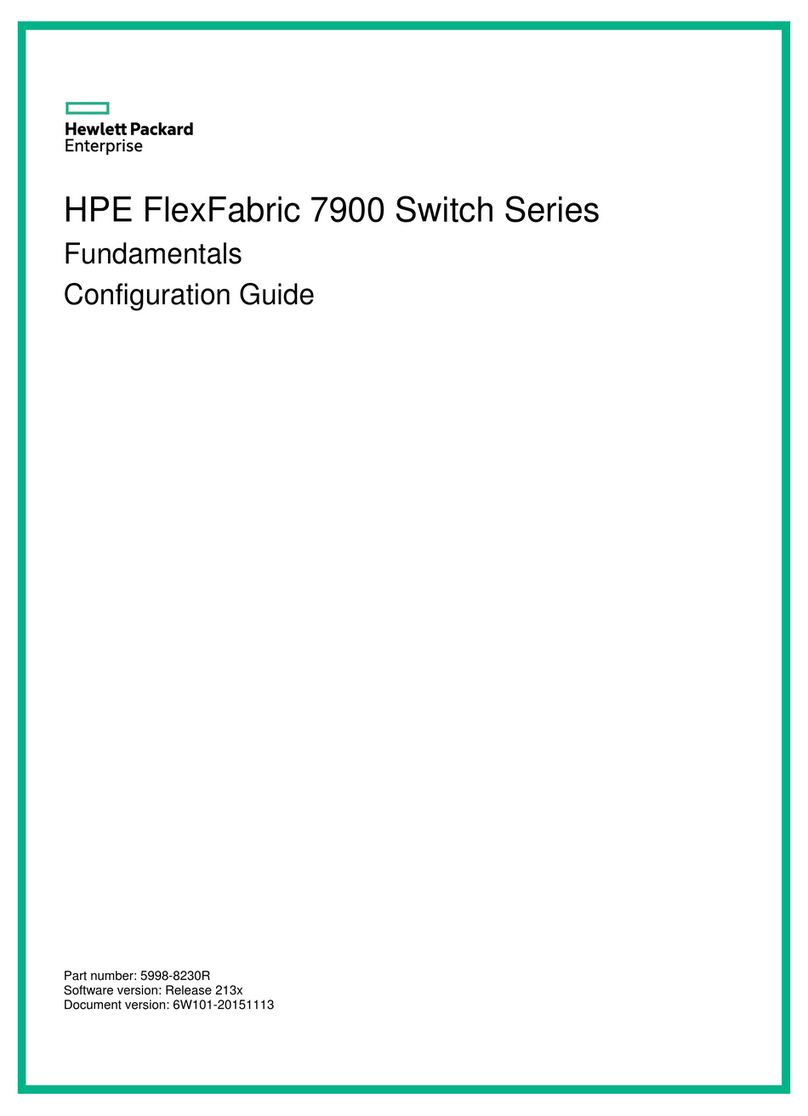
HPE
HPE FlexFabric 7900 Series Configuration guide

Data Controls
Data Controls GS-2328KX Installation and getting started guide
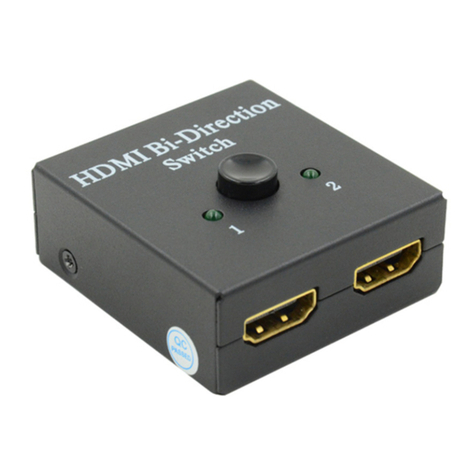
LINK-MI
LINK-MI LM-SW121 manual
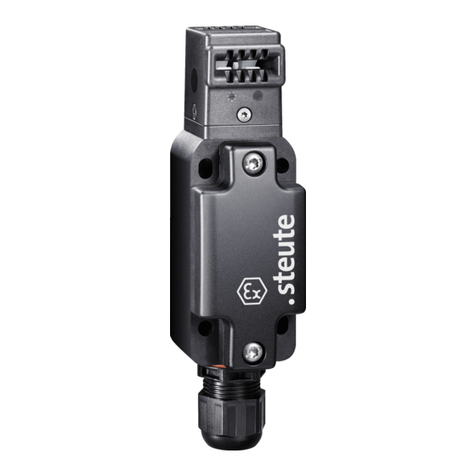
steute
steute ES 97 AZ Mounting and wiring instructions
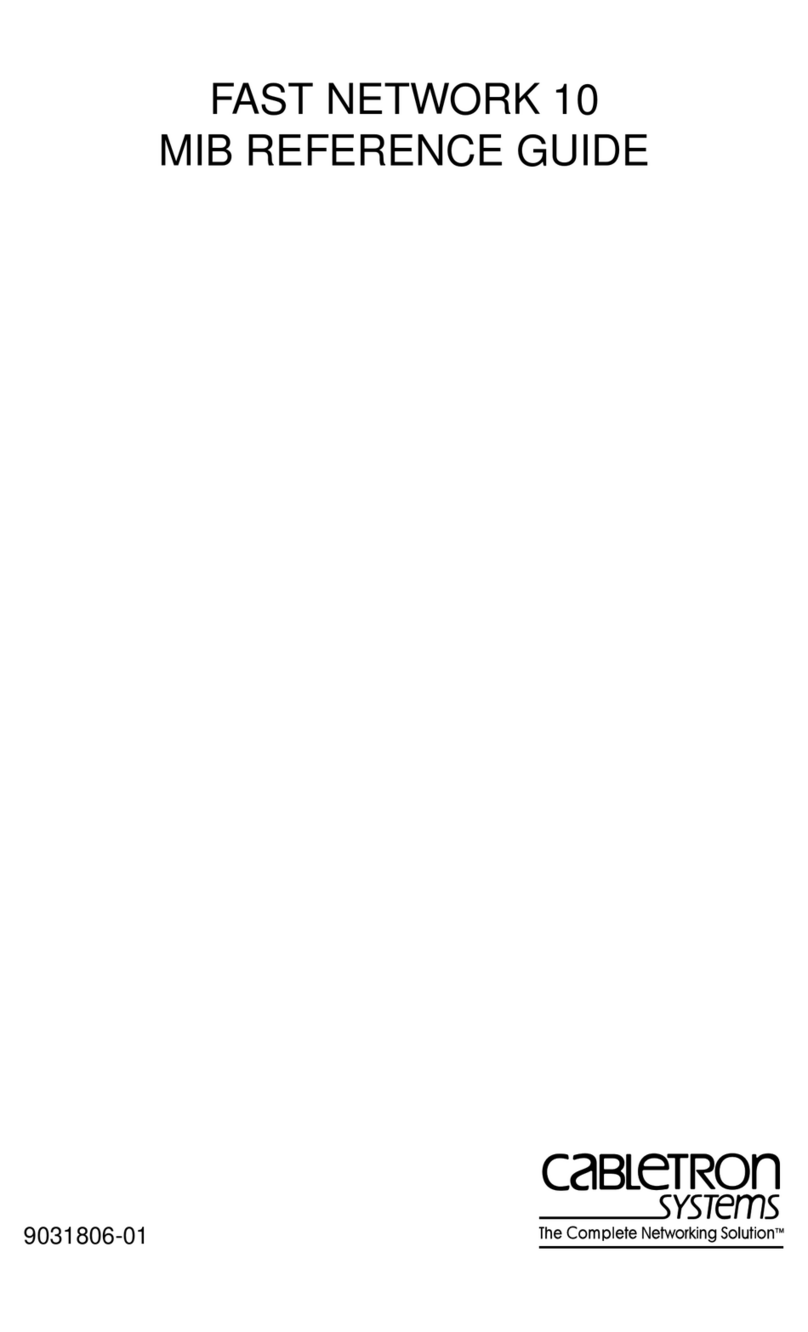
Cabletron Systems
Cabletron Systems FN10 reference guide


